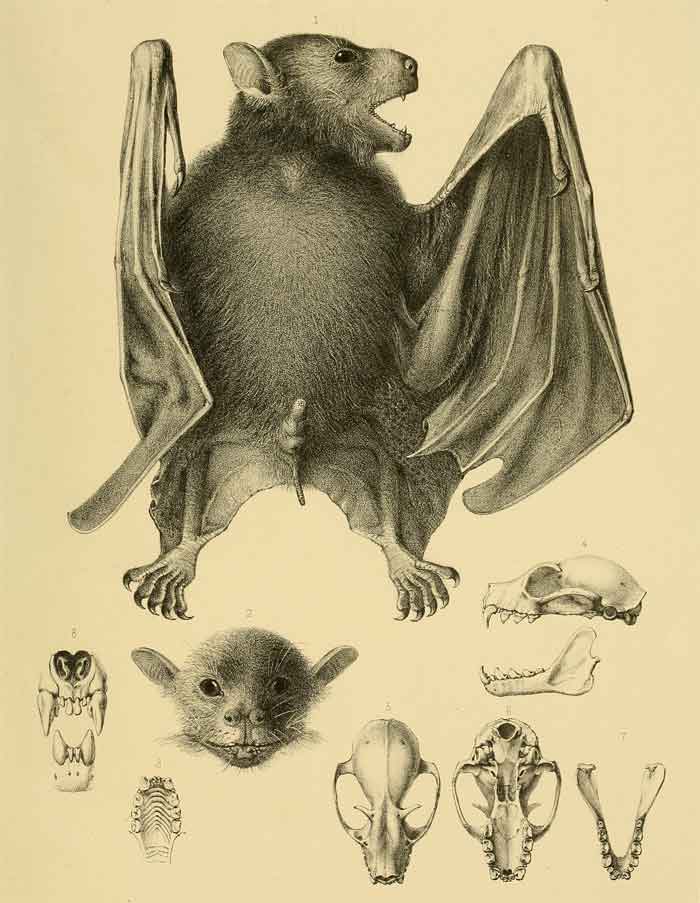
Superregnum: Eukaryota
Cladus: Unikonta
Cladus: Opisthokonta
Cladus: Holozoa
Regnum: Animalia
Subregnum: Eumetazoa
Cladus: Bilateria
Cladus: Nephrozoa
Superphylum: Deuterostomia
Phylum: Chordata
Subphylum: Vertebrata
Infraphylum: Gnathostomata
Megaclassis: Osteichthyes
Cladus: Sarcopterygii
Cladus: Rhipidistia
Cladus: Tetrapodomorpha
Cladus: Eotetrapodiformes
Cladus: Elpistostegalia
Superclassis: Tetrapoda
Cladus: Reptiliomorpha
Cladus: Amniota
Cladus: Synapsida
Cladus: Eupelycosauria
Cladus: Sphenacodontia
Cladus: Sphenacodontoidea
Cladus: Therapsida
Cladus: Theriodontia
Cladus: Cynodontia
Cladus: Eucynodontia
Cladus: Probainognathia
Cladus: Prozostrodontia
Cladus: Mammaliaformes
Classis: Mammalia
Subclassis: Trechnotheria
Infraclassis: Zatheria
Supercohors: Theria
Cohors: Eutheria
Infraclassis: Placentalia
Cladus: Boreoeutheria
Superordo: Laurasiatheria
Cladus: Scrotifera
Ordo: Chiroptera
Subordo: Yinpterochiroptera
Familia: Pteropodidae
Subfamilia: Cynopterinae
Tribus: Cynopterini
Genus: Ptenochirus
Species: Ptenochirus jagorii
Name
Ptenochirus jagorii (Peters, 1861)
Holotype: ZMB 2523, subadult ♂, body in alcohol with skull removed, collected by F. Jagor between 1857 and 1861.
Type locality: “Daraga, Provinz Albay, auf Luzon”.
Combinations
Pachysoma (Ptenochirus) Jagorii Peters, 1861: 707 [original combination]
Cynopterus (Ptenochirus) jagorii: Peters, 1865: 256 [subsequent combination]
Ptenochirus jagorii: Peters, 1867: 867 [subsequent combination]
Native distribution areas
Philippines: Biliran, Bohol, Bongao, Boracay, Caluya, Camiguin, Carabao, Catanduanes, Cebu, Dinagat, Guimaras, Guintarcan, Leyte, Lubang, Luzon, Marinduque, Maripipi, Masbate, Mindanao, Mindoro, Negros, Panay, Polillo Islands, Samar, Sanga-sanga, Secuban, Semirara, Siargao, Sibay, Sibuyan, Siquijor, Tablas, Tandubas and Ticao.
References
Primary references
Peters, W. 1861. Berichtet über die von Hrn. F. Jagor bisher auf Malacca, Borneo, Java und den Philippinen gesammelten Säugethiere aus den Ordnungen der Halbaffen, Pelzflatterer und Flederthiere. Monatsberichte der Königlichen Preussischen Akademie der Wissenschaften zu Berlin 1861: 706–712. BHL Reference page.
Links
Alviola, P.A., Duya, M.R., Ong, P., Rosell-Ambal, R.G.B., Tabaranza, B., Heaney, L., Pedregosa, M., Paguntalan, L.M., Carino, A., Ramayla, S.P., Duya, P., Warguez, D., Alcala, E., Garcia, H.J.D., Pamaong, R., Gonzalez, J.C. & Lorica, R.P. 2021. IUCN: Ptenochirus jagorii (Least Concern). The IUCN Red List of Threatened Species 2021: e.T18653A22071217. DOI: 10.2305/IUCN.UK.2021-1.RLTS.T18653A22071217.en. Accessed on 23 April 2024.
Vernacular names
English: Greater Musky Fruit Bat
The greater musky fruit bat (Ptenochirus jagori) is a species of megabat in the family Pteropodidae. It is endemic to the Philippines. It was named by Peters for Fedor Jagor.
Taxonomy
The greater musky fruit bat was described as a new species in 1861 by German naturalist Wilhelm Peters. Peters placed it in the now-defunct genus Pachysoma, placing it in a new subgenus Ptenochirus. The holotype had been collected in the Philippine province of Albay.[2] The eponym for the species name "jagori" is Fedor Jagor, who collected the first specimen.[3][2]
Description
The greater musky fruit bat's face is similar in appearance to a dog's. It has a short muzzle with tube-shaped nostrils and large eyes. Its ears are small and pointed at the tips. Both its head and its back are brown, though its head is a darker brown than its back. Individual hairs of the head and back are bicolored, with the base of the hair lighter than its tip. It has a dental formula of 2.1.3.11.1.3.2 for a total of 28 teeth.[4]
The total length of its head and body is approximately 125–131 mm (4.9–5.2 in). Its tail is 11 mm (0.43 in) long; its forearm is 86–87 mm (3.4–3.4 in) long; its ear is 17–18 mm (0.67–0.71 in) long; and its foot is 21 mm (0.83 in) long.[4]
Biology and ecology
Unlike some bat species, the greater musky fruit bat is not highly gregarious: it is often found roosting singly or in small groups. Its roosting habitat includes the cliffsides of shallow caves. It is frugivorous, consuming the fruits of plants such as Ceiba pentandra.[4]
Range and habitat
It is endemic to the Philippines, where it has been documented at a range of elevations from 0–1,950 m (0–6,398 ft) above sea level.[1]
Conservation
As of 2021, it is evaluated as a least-concern species by the IUCN. It met the criteria for this designation because it is considered both common and widespread. Furthermore, it can tolerate some degree of human disturbance to its habitat, and persists in urbanized area. Its population trend is considered to be stable.[1]
References
Alviola, P.A.; Duya, M.R.; Ong, P.; Rosell-Ambal, R.G.B.; Tabaranza, B.; Heaney, L.; Pedregosa, M.; Paguntalan, L.M.; Carino, A.; Ramayla, S.P.; Duya, P.; Warguez, D.; Alcala, E.; Garcia, H.J.D.; Pamaong, R.; Gonzalez, J.C.; Lorica, R.P. (2021). "Ptenochirus jagori". IUCN Red List of Threatened Species. 2021: e.T18653A22071217. doi:10.2305/IUCN.UK.2021-1.RLTS.T18653A22071217.en. Retrieved 17 November 2021.
Peters, W. (1861). "Hr. W. Peters berichtet über die von Herrn. F. Jagor bisher auf Malacca, Borneo, Java und den Philippinen gesammelten Saugethiere aus den Ordnungen der Halbaffen, Pelz-flatterer und Flederthiere" [Mr. W. Peters reports on the Lord's. F. Jagor so far collected in Malacca, Borneo, Java and the Philippines suckling animals from the orders of the half-monkeys, fur-flatterer and bats]. Monatsberichte der Königlichen Preussische Akademie des Wissenschaften zu Berlin (in German). 1861:Hälfte 2: 707–708.
Beolens, B.; Watkins, M.; Grayson, M. (2009). The eponym dictionary of mammals. JHU Press. p. 209-210. ISBN 978-0801895333.
Rabor, D. S. (1977). Philippine Birds & Mammals. UP Science Education Center. pp. 210–211. ISBN 9780824805357.
Retrieved from "http://en.wikipedia.org/"
All text is available under the terms of the GNU Free Documentation License

